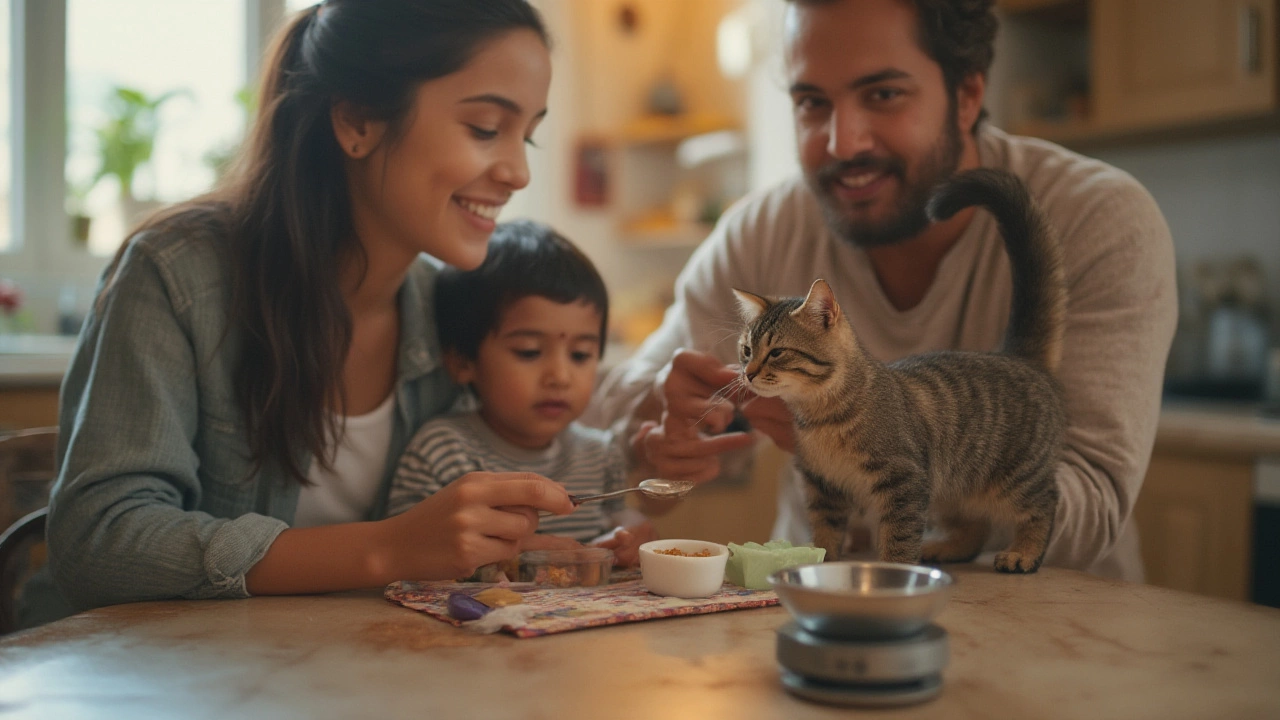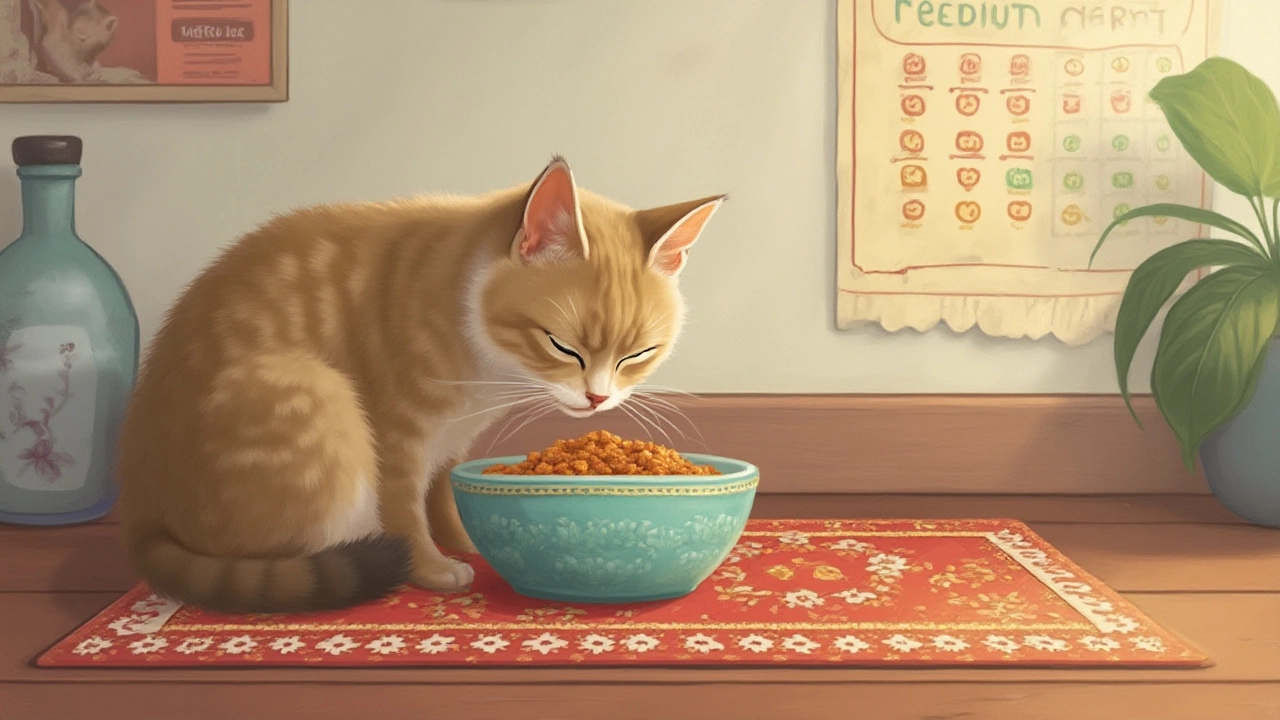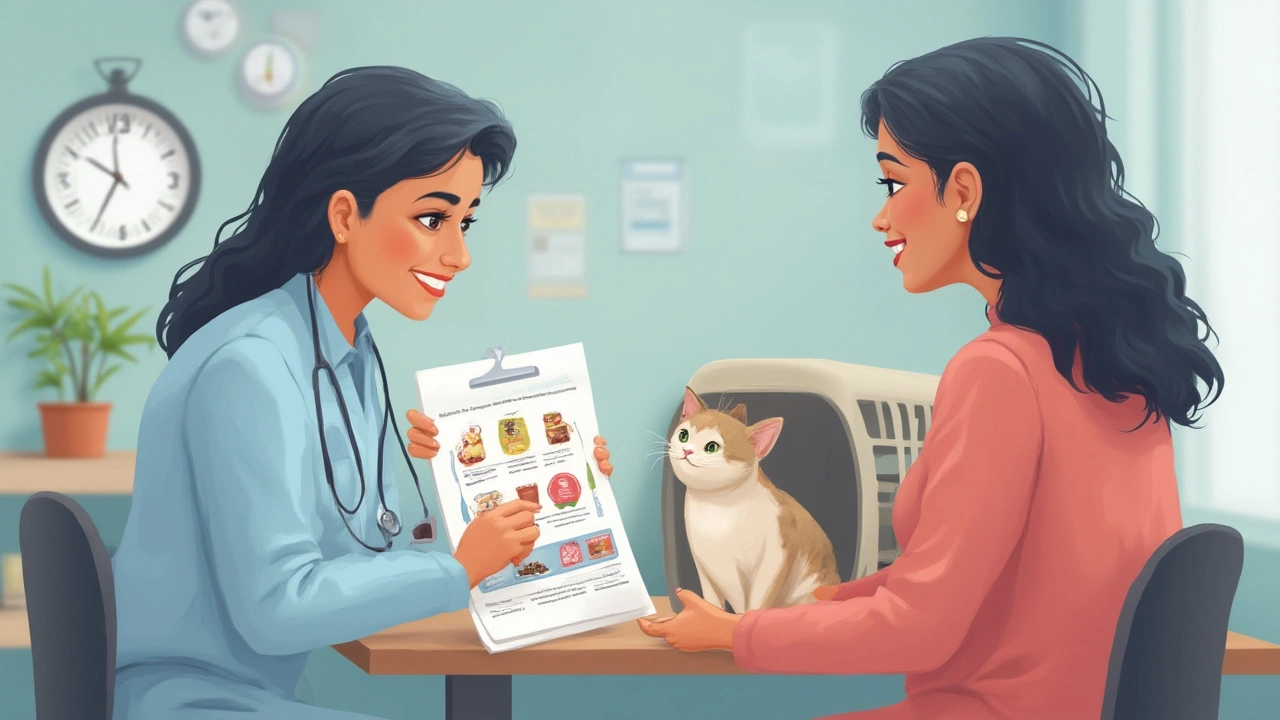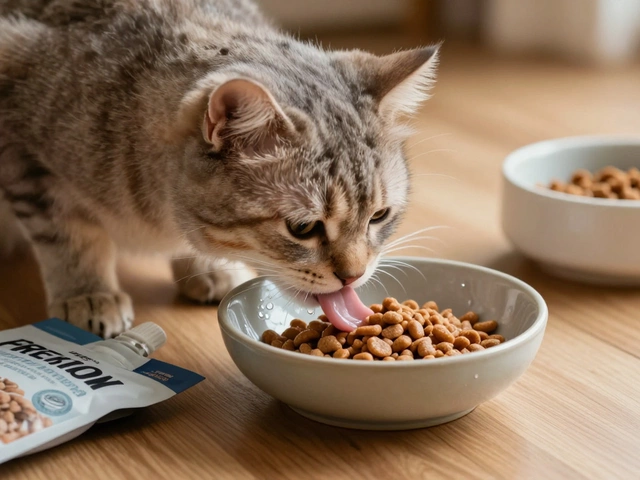
Ever watched your cat wolf down a can of wet food, then stare at you like they’re still starving? Or maybe you worry you’re giving them too much and turning them into a fluffy little bowling ball. Feeding cats feels simple until you really try to get it right—especially when you want them healthy, not just happy.
Understanding Your 10 lb Cat’s Wet Food Needs
If your cat weighs around 10 pounds, you’re not alone—most adult domestic cats stand right around this mark. But here’s where things get interesting: not all 10 lb cats need the same amount of wet food. Much depends on their metabolism, age, and how lazy (or zoomy) they are. Let’s bust the myth right off the bat: there’s no single gold standard number for all cats. But you can find your cat’s sweet spot.
The most common guideline you’ll see tossed around is 20-30 calories per pound of body weight per day. So for a 10 lb cat, that’s 200-300 calories a day, but let’s get more specific. Wet cat foods typically range from 70 to 110 calories per 3-ounce (85g) can. Do the maths—if you’re using those little 3 oz cans, that means about 2.5 to 4 cans daily. But wait: this isn’t one-size-fits-all.
Here’s where label reading comes in. Most cat food cans have calorie counts in small print. Find that: it’s usually called “ME (metabolizable energy).” If your chosen can is 80 calories per serving, three cans give you 240 calories—smack in the recommended range for an average 10 lb adult. But is your cat a lap potato or a non-stop explorer? More active cats or those under stress (kittens, pregnant, or nursing cats) may need more. And if you give dry kibble too, this changes the math.
According to the experts at the Cornell Feline Health Center,
“An average adult cat requires about 200-250 calories a day to maintain their body weight.”They add that not all calories are equal—cat food with higher protein and lower carbs often wins for feline health.
If your 10 lb cat spends hours sunbathing and rarely chases anything but dreams, stick to the low end. A kitten bouncing off walls, or a cat you regularly take for leash walks, might need closer to the higher end. Indoor cats have significantly lower activity; a 2019 study in the Journal of Feline Medicine and Surgery found indoor cats spend 80% of their time resting.
Bored yet? Cats sure aren’t. If you’re watching their food disappear way faster than the recommended amount, double-check their activity and health by looking at body condition, not just the scale. Try the “rib test”: run your hands along their sides. If you can feel ribs with gentle pressure but they’re not popping out, that’s about right.
Now, another thing people miss—every cat can be different. A 10 lb Maine Coon might look lean while a 10 lb British Shorthair could seem round. Don’t judge by breed standards alone. Senior cats may need less due to lower metabolism, while younger adults (1-5 years) often have higher appetites.
Check out this simple breakdown of calories by can size and total needed daily:
| Can Size | Average Calories | Cans Needed for 250 Calories |
|---|---|---|
| 3 oz (85g) | 80 | 3 |
| 5.5 oz (156g) | 140 | 1.8 |
| 6 oz (170g) | 170 | 1.4 |
No one loves fractions of a can, so you’ll have to round up or down, splitting cans between meals. Most folks divide the day’s food into two servings: morning and night. This keeps your cat from inhaling everything at once—and waking you at 4am for more.

Factors That Affect the Right Amount for Your Cat
Sometimes two cats the exact same weight can eat wildly different amounts. Why? Here are some factors, many of which are easy to overlook:
- Age and life stage: Kittens and young cats (under two years) need more calories for growth. Seniors usually need less, unless illness steals their appetite.
- Body condition: If your cat’s “belly hangs low when they go,” you may already be overfeeding. If you can see their spine clearly, bump it up. Body condition scoring (1-9 scale, vets use it!) is better than a scale alone.
- Neutering/spaying: Fixed cats usually have slightly lower energy needs—by about 20% according to some studies, so keep an eye out for creeping weight gains post-surgery.
- Metabolism: Just like people, some cats burn energy fast, others are slow burners.
- Activity level: Does your cat hunt toys, race up cat trees, or spend all day snoozing on the back of the sofa?
- Health conditions: Hyperthyroid cats eat more but lose weight; diabetic cats often do too. Always check with a vet if anything seems off.
- Other food sources: Kibble counts. Treats do too. Mix-feeding means wet food needs adjust downward.
- Type of wet food: Pâté is denser than “in sauce” or “flaked”—soupy foods usually have fewer calories per ounce.
Hydration is another hidden benefit here. Wet food has about 75%-80% water, helping cats who rarely drink from bowls. In the wild, their prey contains all the moisture they need. So, by giving mostly wet food, you significantly lower the risk of urinary tract issues. That’s not just marketing—studies from Tufts University have shown cats fed mostly wet food form fewer urinary crystals. Cats are notorious for developing kidney concerns, especially as they age. If in doubt, wet food does more than just fill their bellies.
If you’re still playing guessing games, weigh your cat every week or two at home. You can use your bathroom scale (hold the cat, subtract your weight) until you have a routine. Sudden gains or losses mean it’s time to rework your feeding plan—with vet advice if it’s more than 5% of their body weight.
Mixing wet and dry? Adjust proportions! If your cat gets 100 calories from a small handful of kibble, subtract that from their wet food allowance. People often forget that treats add up, too: a dental chew or a bit of chicken from your plate is real energy. Keep track and you’ll avoid the accidental chonkification.

Tips For Feeding Wet Food – Portion Control, Routines, and Real-Life Tricks
Okay, now that you’ve got the numbers down, let’s talk practical feeding: how do you actually get it right day by day with a real, living, opinionated cat? Portion control is as much art as science. Your cat isn’t a robot, and few of us want to measure down to the last gram every single meal. But some habits make it way easier.
Use a kitchen scale if you want real accuracy. Most cans list food by grams or ounces, and you can quickly split one into perfect halves or thirds. This way, you’ll always know they’re getting what they need—and not more. This matters more with calorie-rich, dense pâtés or “premium” foods.
Set a routine. Feed your cat at roughly the same times every day—two or three meals is ideal for mental stimulation and digestive comfort. This lowers the risk of your cat “scarf and barfing”—that lovely event where all their food comes back up if they eat too quickly.
Refrigerate leftovers. Wet food spoils fast, especially in a warm room, so if your cat doesn’t finish a serving in under an hour, cover it and pop it in the fridge. Let it come to room temperature (cats hate cold food) before offering again. Don’t microwave in the can! Transfer to a bowl and stir before serving.
If your cat is picky…yeah, they’re all picky sometimes. Try different textures (pâté, chunks in gravy, shreds) or brands. Rotate flavors to prevent boredom, but avoid sudden diet switches—transition slowly to avoid stomach upset. When in doubt, add a little warm water to make the aroma stronger.
Cleaning bowls is another overlooked trick. Cats don’t like old, crusty food stuck to their dishes. Stainless steel or ceramic bowls are easier to keep clean (and don’t make food taste weird, unlike some plastics). Wash with hot, soapy water daily.
If you’re using a food timer or an automatic feeder, check that it actually dispenses wet food properly—some only work with kibble. For long days out, consider splitting the daily portion in small containers, so someone else can feed if needed without overdoing it.
Cats are smart and quickly train you to feed them more with cute meows or tricks. Don’t fall for “starving kitty” drama if you know you’re giving the right calories daily. Want to please them? Offer play, attention, and environmental enrichment—extra food isn’t always the answer.
Track your feeding and your cat’s weight every few weeks. If you see changes in body shape or energy, adjust portions by 10%. Don’t make big jumps instantly—your cat’s digestion likes steady changes.
Watch for warning signs. If your cat is losing weight even when you’re feeding the correct calories, or packing on pounds, see a vet. Hidden diseases often show up in eating and drinking habits first. If you’ve got a multi-cat home, feed them separately so you know who’s eating what.
Finally, feeding is bonding time. Use it to check for any odd behavior, changes in attitude, or lumps or bumps you wouldn’t notice otherwise. Even picky eaters come around when you make mealtime calm, predictable, and positive.
The bottom line? If your 10 lb cat is getting 240-270 calories of wet food daily, divided between two or three meals, and maintains a healthy body shape, you’re winning. Keep it simple but stay watchful—cats speak volumes with their energy, weight, and attitude.



